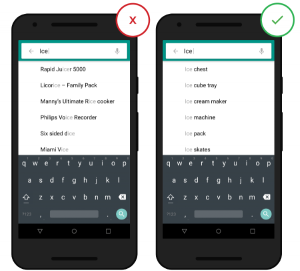In 2017, CEB Insights reported that B2B brands that created a strong connection with their prospects experienced higher rates of consideration, purchase and willingness to pay a premium.
This statement seems rather obvious. Yet, I’ve often witnessed firsthand how B2B marketers get so tied up in lead volume that they often neglect the importance of building trust and credibility – both before and after a contact becomes a qualified lead. It’s key to remember that lead generation, though an incredibly important element of demand generation, is just that: one element.
Crucial elements of successful demand gen strategies are often overlooked as we strive to tread water in marketing’s growing flood of responsibilities. That’s why we must, from time to time, take a step back and review out demand generation strategies to identify what’s working, what’s not and then gain some insights from industry peers.
At Integrate, we’re privileged to work with some very talented B2B marketing teams and see how they execute successful demand generation strategies. Over the years, I’ve identified nine key areas of a demand generation strategy that matter the most.
This article explores these nine areas, providing insights that will help you sharpen your own strategy, so you don’t waste a year on an ineffective marketing plan.
Demand Generation Strategy: 9 Things to Evaluate
1. Target KPIs
Ann Roskey, a Senior Associate at Inverta, says:
“By breaking down silos and looking at the health of your funnel with a common lens, you’re better equipped to diagnose areas of poor performance.”
She recommends using Key Performance Indicators (KPI) to understand weaknesses in the funnel, sales obstacles and lead quality by source. With enough measurements to be precise, your organization gains insights needed to create strong sales-marketing alignment.
Demand marketers should determine KPIs for:
- Inbound marketing
- Third-party lead generation sources
- Integrated campaigns & programs
- Conversion funnel stages
Getting a true, full-funnel KPI measurement requires technology. Without software to centralize data and insights, there’s a lot of manual effort needed to consolidate and standardize data from a variety of audiences, programs, teams and systems.
2. Messaging Map
A prerequisite to evaluating your messaging is creating comprehensive buyer personas. With detailed profiles of your target customers, you can evaluate how well your website messaging and specific pieces of content are likely to resonate with your personas’ needs, goals and challenges.
Getting your personas and messaging right is pivotal. And fixing non-personalized, vague or inconsistent messaging can generate significant marketing performance gains, especially regarding inbound and paid content distribution efforts.
We recommend that you evaluate your messaging once a quarter. That’s right, quarterly.
A static message is a risk, and your brand’s messaging and content need to evolve to keep up with changes in your target customers behavior, products and services, market conditions, partnerships, and your program goals.
Mike Turner, Senior Manager of Lead-to-Revenue Marketing at Textron Aviation, put it well when he said the most game-changing B2B brands excel at “understanding and communicating messages that help customers through their journeys.”
3. Content Marketing
Mapping your messaging is important, but a successful content marketing strategy requires much more. A well-defined content strategy is focused on generating demand by aiding and educating target audiences, helping them navigate all your content so they can get the information they need, when they need it. Your content and the manner in which you distribute it should results in an exceptional customer experience across multiple channels.
By uniting your program themes across all channels, you can ensure your message and buyer’s journey are cohesive. Alexa Bleecker, Demand Generation Manager at IBM Security, describes content strategy evaluation as an exercise in discovering “better ways of connecting the dots of customer and prospect experiences in ways that are valuable to them.”
The basics of a strong, quarterly content marketing strategy include:
- Measurable quarterly content goals
- Strategic actions to achieve goals
- Description of programs, themes and campaigns
- Premium content resources
4. Marketing Channels
Understanding the performance of distribution channels is an important key to creating a strategy for amplifying and distributing content. This should include a full-funnel, closed-loop evaluation of both owned and paid channels:
- Owned Channels: Blog, website, search, social media, webinars
- Paid Channels: Content syndication, events, sponsorships, display ads, paid search, paid social
As demand marketing programs mature and grow, it’s common for the owned and paid channels to expand, especially as new partnerships with third-party partners are formed. Demand marketers should go beyond analyzing single channel efficacy to understand how various combinations of channels, partners, content, audiences and offers impact KPIs.
5. Marketing Systems
Most marketing organizations gradually build a MarTech “stack,” comprising various systems typically developed around the hubs of marketing automation (MA) and customer relationship management (CRM) platforms.
Evaluate your marketing systems to discover redundant or outdated tech, but also to identify where new tools may be needed to improve performance or how existing tools could be used more effectively. Asking questions such as these is helpful:
- Which systems are solving the problems they were adopted to solve? Which aren’t?
- Is there a lack of tech expertise with regard to any specific systems?
- Which systems are integrated? Which aren’t? How can the stack be better integrated?
- How does data move across systems? Where are the roadblocks?
- Where are there holes in processes that still require manual work? Can they be filled by existing systems or is a new tech adoption necessary?
For example, Ashleigh Davis, a Senior Marketing Manager at Trend Micro, reports that prior to adopting a technology for orchestrating their demand marketing initiatives, they spent a lot of time on manual data management. She says that their processes, “required standardizing, scrubbing, reporting bad data back to the vendors for lead credits, etc. “ Fortunately, with automation, the team has been freed up to do more “value-added activities.”
6. Lead Data Processes
Process mapping may not be the most glamorous activity in the world, but it’s valuable.
Lead data processes are a leading cause of poor database quality, and understanding requirements for improvement can lead to business growth in myriad ways (lower cost per lead, saved time, higher conversion rates, better prospect experience, etc.).
Questions to ask include:
- When new leads are generated, how is data received?
- Where does new lead data go?
- How much time is spent manipulating data (e.g., cleansing, deduping, standardizing) or manually inputting leads?
- Are there any technologies or processes to verify lead quality?
7. Lead Quality Review
Full-funnel analysis can reveal weaknesses in lead quality review processes. A sharp drop-off between the number of leads generated compared how many proceed through the funnel to become marketing-qualified leads (MQL), sales-qualified leads (SQL) or opportunities can indicate a need for stronger lead qualification, better audience targeting or smarter sales-marketing alignment activities.
Questions to ask include:
- What are the conversation rate percentages by funnel stage? Velocity rates?
- How does a lead become an MQL or SQL? What’s the scoring criteria? Is it working?
- How are bottom-funnel conversion rates attributed to top-funnel lead gen sources, audience targets, content, etc.?
- Are there any safeguards against paying for bad leads through third-party distribution channels?
8. Performance Insights
Demand marketing programs need strategic tools to tie lower-funnel performance back to top-funnel demand generation efforts.
Full-funnel insight into B2B marketing performance is necessary to answer important questions like:
- Which top-funnel campaigns, lead sources, content, etc. generate the most MQLs, SALs and sales opportunities?
- Which lead nurturing tactics (offers, content, messaging) are resulting in the highest conversion rates?
9. Optimization Processes
The most effective and sophisticated B2B marketers are constantly fine-tuning their optimization processes. Ideally, your strategy should identify ways to learn from your insights and execute continuous improvement cycles quickly.
Even the right data won’t transform your results if you’re not prepared to take action.
How to Invest Wisely in Demand Marketing Strategy Improvement
Technology alone can’t fix a bad process. Even the smartest software can’t compensate for weak processes or poor sales and marketing alignment. The best demand marketing strategies unite and mobilize people, processes and technology.
With a holistic strategy and the tools to evaluate every aspect of a demand marketing program, B2B marketers can enter the new year with the insights needed to automate processes and facilitate excellence.
Business & Finance Articles on Business 2 Community
(72)







